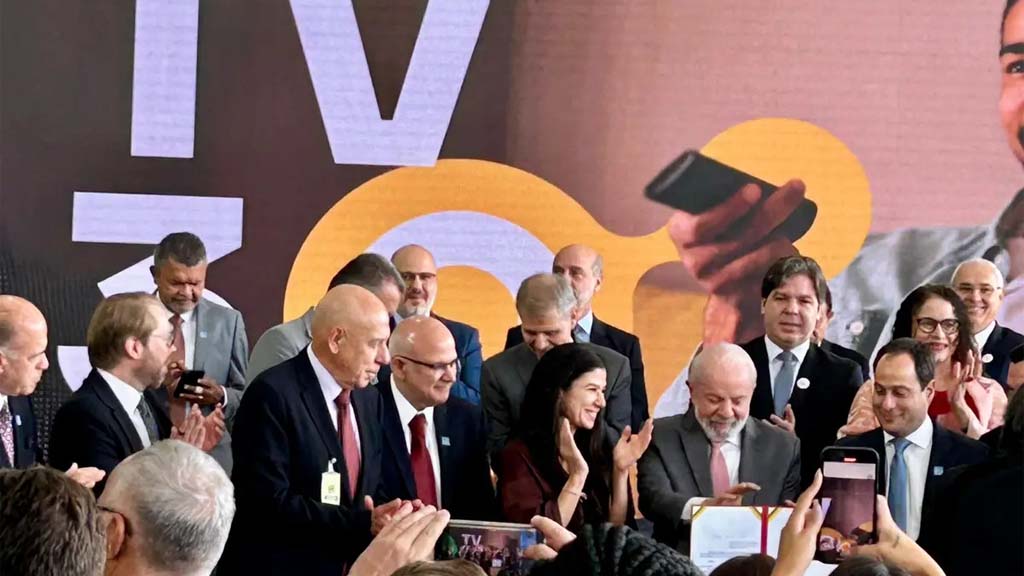Timing Is Everything
Congrats to Brazil for adopting DTV+ in time to watch the World Cup in NextGen TV

Congratulations to Brazil on its official decision to deploy DTV+ (formerly known as TV 3.0), which incorporates many components of the ATSC 3.0 suite of standards, including the physical layer.
The press release ATSC issued upon Brazil President Luiz Inácio Lula da Silva signing the decree mandating DTV+ noted that commercial service is expected in time for the 2026 FIFA World Cup, June 11-July 19, 2026—a move that echoes South Korea’s decision to transmit 4K UHD over ATSC 3.0 over the air domestically in time for the 2018 PyeongChang Winter Olympics.
Brazil’s timing brought to mind the National Association of Broadcasters’ petition for FCC rulemaking on the shut-off of ATSC 1.0 and replacement with 3.0. NAB has proposed a two-phase shut-off. In the first phase, stations in the top 55 markets would sunset 1.0 in February 2028. All the rest would pull the plug on 1.0 in February 2030.
So here we are once again waiting patiently for our regulators to clear the decks for NextGen TV. Does anyone want to wager on which comes first: full deployment in the U.S. or Brazil?
I’ve previously written about a conversation at NAB Show several years ago with Rich Chernock, former chairman of ATSC Technology Group 3, the one responsible for developing 3.0. I asked him which he thought would happen first: Nationwide deployment of ATSC 3.0 or 5G? Well, T-Mobile settled that.
But what about tech developments? Which will come first? Full U.S. deployment of 3.0 or:
- SpaceX’s Starship Mars reaches the Red Planet with an unmanned mission. Elon Musk is targeting the end of 2026.
- Humans return to the moon. NASA now is aiming at mid-2027 for Artemis III.
- The first supersonic passenger jet flight since the Concorde flies. Boom Supersonic looks to have passenger service in 2029.
- The dawn of Artificial General Intelligence (AGI). Futurist Ray Kurzweil predicts it by 2029.
- 6G rollout begins. Telecom experts point to 2030 if not sooner.
- Humans set foot on Mars. SpaceX thinks that will happen between 2029 and 2031.
- Commercial nuclear fusion power. TAE Technologies in Foothill Ranch, Calif., says that’s coming by the early 2030s.
- Publicly available brain chips. Neuralink expects to make that happen between 2035 and 2040.
- Consumer quantum computers. Experts expect that sometime between 2035 and 2040.
The singularity—the moment that artificial intelligence surpasses human intelligence. Kurzweil predicts 2045.
The professional video industry's #1 source for news, trends and product and tech information. Sign up below.
That’s a whole lot of technical advancement before the proposed 1.0 shutoff. Who knows what the FCC will actually do?
If the 1.0 sunset slips much past February 2030, each passing year will look more like something out of a sci-fi movie than what you or I have experienced in our lifetimes, even when it comes to entertainment.
Who better to ask how quantum computing, possibly arriving in 2035, will affect entertainment than Google’s Gemini AI? Its answer: by “enabling hyper-personalized content recommendations and dramatically enhancing production through realistic rendering and complex simulations, while also offering advanced data compression and distribution for more efficient consumption.”
“Key areas of impact include improved AI, next-level visuals, optimized distribution, new interactive experiences,” it added.
Maybe that’s good news for broadcasters looking to cram more content into 6 MHz, but more likely it will heap on even more competitive pressure than today as these tools enhance the entertainment experiences broadcast competitors can deliver and make the battle for eyeballs even stiffer.
Phil Kurz is a contributing editor to TV Tech. He has written about TV and video technology for more than 30 years and served as editor of three leading industry magazines. He earned a Bachelor of Journalism and a Master’s Degree in Journalism from the University of Missouri-Columbia School of Journalism.

